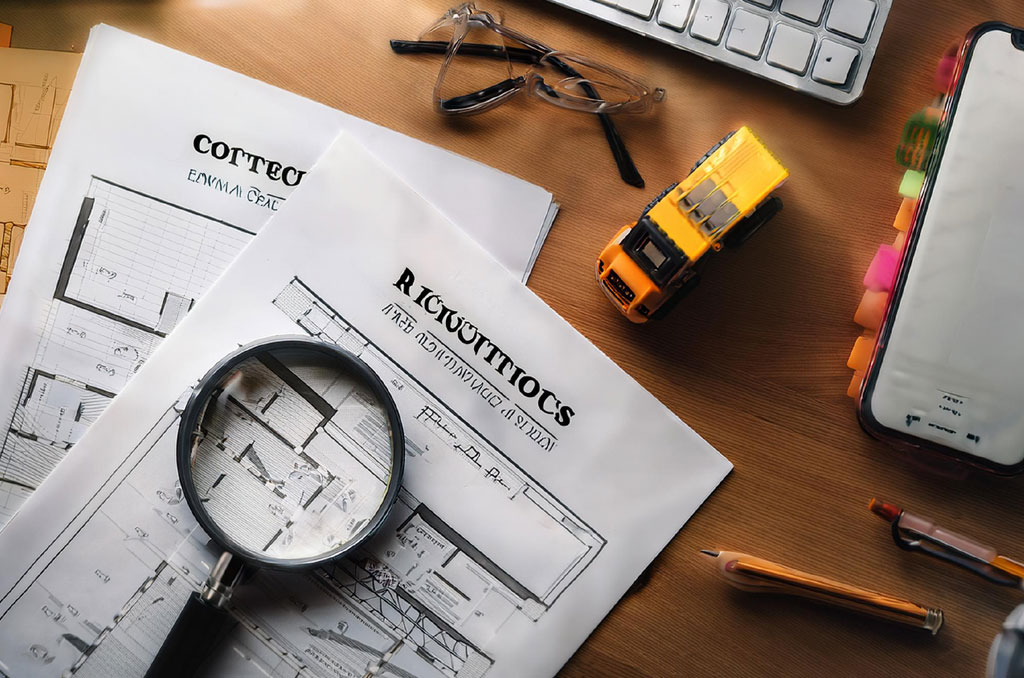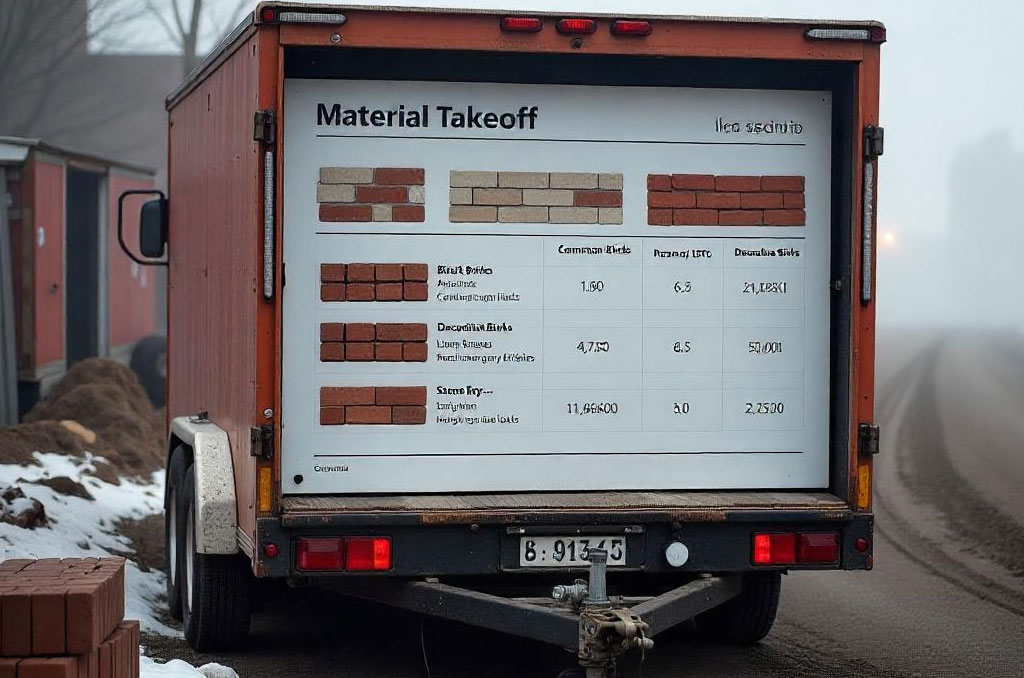Step-by-Step Process of Construction Estimating Services: A Guide for Beginners and Homeowners
Embarking on a construction project, whether it’s building a new home, remodeling an existing space, or planning a commercial development, requires careful financial planning. One of the most crucial aspects of this process is construction estimating, which helps in determining the overall project cost. A well-prepared estimate ensures that homeowners can budget effectively, avoid unexpected financial burdens, and make informed decisions throughout the construction journey.
Construction estimating involves several detailed steps, from understanding the project scope to finalizing costs. It requires gathering project information, assessing material and labor costs, and accounting for contingencies and overhead expenses. By following a structured approach, homeowners and contractors can achieve an accurate estimate that keeps the project on track and within budget.
This guide breaks down the step-by-step process of construction estimating services, providing beginners and homeowners with a comprehensive overview of how costs are determined. Whether working with a contractor or managing estimates independently, understanding these steps will help in planning a successful and financially sound construction project.
Step 1: Understanding Project Scope
 The project scope serves as the foundation of the entire estimating process. A well-defined scope ensures that every cost element is considered and reduces the likelihood of budget overruns. This step requires collaboration between the homeowner, architect, and contractor to align expectations and avoid miscalculations later in the project.
The project scope serves as the foundation of the entire estimating process. A well-defined scope ensures that every cost element is considered and reduces the likelihood of budget overruns. This step requires collaboration between the homeowner, architect, and contractor to align expectations and avoid miscalculations later in the project.
One of the most important aspects of defining the project scope is determining the level of detail and quality required for materials and finishes. Homeowners should consider the difference between standard and high-end materials, as this significantly impacts the overall project cost. Additionally, reviewing design elements such as energy-efficient systems, smart home technology, and custom features should be addressed early to avoid costly changes down the line.
Another key consideration in this step is compliance with local building regulations and permit requirements. Construction laws vary by region, and failing to meet legal standards can lead to fines, project delays, or even forced modifications. Consulting with professionals and obtaining the necessary permits in advance ensures a smoother estimating and construction process.
By thoroughly understanding the project scope, homeowners and contractors can create a more accurate and realistic budget. This proactive approach minimizes unexpected expenses, ensures alignment with project goals, and sets a strong foundation for successful project execution.
Step 2: Gathering Project Information
 To create an accurate estimate, it is essential to gather detailed project information. This step involves collecting architectural drawings, engineering plans, and material specifications. These documents provide a clear blueprint of the project’s requirements, ensuring that no crucial elements are overlooked during the estimation process.
To create an accurate estimate, it is essential to gather detailed project information. This step involves collecting architectural drawings, engineering plans, and material specifications. These documents provide a clear blueprint of the project’s requirements, ensuring that no crucial elements are overlooked during the estimation process.
One of the most critical components of project information is the architectural drawings and blueprints. These plans outline the building’s dimensions, structural elements, and overall design. Reviewing these documents allows estimators to understand the project’s scale and complexity, helping them allocate costs appropriately.
In addition to architectural plans, engineering and structural designs play a key role in estimating. These documents detail the foundation, load-bearing structures, and mechanical systems, which are crucial for determining material and labor costs. Consulting with engineers ensures that all technical aspects are accounted for, preventing costly errors and modifications during construction.
Finally, material specifications and labor requirements must be reviewed to develop a precise estimate. Different materials come with varying costs, and understanding the quality and type required helps in pricing them correctly. Likewise, identifying skilled labor needs for various construction phases ensures that labor costs are accurately factored into the estimate. Gathering comprehensive project information at this stage lays the groundwork for a reliable and well-structured cost estimate.
Step 3: Performing Quantity Takeoff
 Quantity takeoff is a crucial step in construction estimating, as it involves quantifying all materials, labor, and equipment needed for the project. This process requires a detailed review of architectural and engineering drawings to measure and list every component required for construction accurately.
Quantity takeoff is a crucial step in construction estimating, as it involves quantifying all materials, labor, and equipment needed for the project. This process requires a detailed review of architectural and engineering drawings to measure and list every component required for construction accurately.
The first part of quantity takeoff focuses on material estimation. This includes calculating the required amounts of concrete, bricks, steel, roofing, flooring, and finishing materials. Each material must be measured precisely to prevent shortages or excess purchases, which can impact the budget and project timeline. Accurate measurements ensure that procurement is cost-effective and minimizes waste.
In addition to materials, labor requirements must also be quantified. This includes assessing the number of workers needed for different construction phases, such as foundation work, framing, electrical installation, and plumbing. Estimators must determine the time required for each task and calculate labor costs accordingly to ensure a realistic workforce budget.
Equipment needs are another crucial aspect of quantity takeoff. Construction projects often require machinery such as excavators, cranes, and scaffolding. The estimator must determine the duration for which each piece of equipment will be required and include rental or purchase costs in the estimate. A comprehensive quantity takeoff helps in creating an accurate budget, minimizing surprises, and ensuring smooth project execution.
Step 4: Estimating Material Costs
 Estimating material costs is a critical step in construction estimating, as materials make up a significant portion of the project budget. This process involves researching current market prices, analyzing supplier quotes, and factoring in potential price fluctuations due to market demand or seasonal changes. By keeping track of material costs, estimators can ensure a realistic and competitive budget.
Estimating material costs is a critical step in construction estimating, as materials make up a significant portion of the project budget. This process involves researching current market prices, analyzing supplier quotes, and factoring in potential price fluctuations due to market demand or seasonal changes. By keeping track of material costs, estimators can ensure a realistic and competitive budget.
A key aspect of material cost estimation is identifying cost-effective alternatives without compromising quality. Homeowners and contractors can compare different brands and suppliers to find the best prices while maintaining project standards. Additionally, purchasing materials in bulk or sourcing locally can help reduce costs by minimizing transportation expenses and supplier markups.
It is also essential to account for wastage and excess materials. Some materials, such as concrete, tiles, and wood, often require additional quantities due to cutting, breakage, or unforeseen project modifications. Factoring in a reasonable percentage for material wastage ensures that the project runs smoothly without unexpected shortages or overruns, ultimately keeping costs under control.
Step 5: Calculating Labor Costs
Labor costs play a significant role in construction estimating, as they can account for a large portion of the total project budget. Estimating labor costs accurately requires identifying the types of workers needed, calculating the total labor hours required, and applying standard wage rates based on industry standards and regional labor rates.
The first step is to determine the different trades involved in the project, such as carpenters, electricians, plumbers, masons, and painters. Each trade has varying hourly rates and productivity levels, which must be considered when estimating costs. The complexity and scale of the project also influence labor costs, as more intricate designs may require highly skilled workers, leading to higher wages.
Another critical aspect of labor cost estimation is factoring in labor productivity rates. Productivity rates determine how many hours a worker needs to complete a specific task, which affects overall costs. Additionally, overtime pay, insurance, workers’ compensation, and employee benefits should be included in the estimate to avoid underbudgeting. By carefully calculating labor costs, estimators ensure that the project is adequately staffed without exceeding the budget.
Step 6: Adding Equipment and Overhead Costs
Equipment and overhead costs are essential components of construction estimating, as they cover the tools and administrative expenses necessary to complete a project. Estimators must determine whether to rent or purchase equipment, considering factors such as project duration, equipment availability, and long-term cost benefits. Common construction equipment includes cranes, excavators, scaffolding, and power tools, all of which must be factored into the budget.
In addition to equipment costs, fuel, transportation, and maintenance expenses must be accounted for. These costs can fluctuate based on location and project demands, so estimators should include a buffer to accommodate potential variations. Proper planning ensures that equipment is available when needed without causing delays or exceeding the budget.
Overhead costs encompass indirect expenses such as project management fees, insurance, office costs, and permits. These costs are often overlooked but are crucial for the smooth operation of a construction project. Including these expenses in the estimate ensures a comprehensive and accurate budget, preventing financial shortfalls during project execution.
Step 7: Including Contingency and Profit Margins
A well-prepared construction estimate includes a contingency fund to account for unexpected costs, such as material price fluctuations, weather-related delays, or design changes. A contingency percentage, typically ranging from 5% to 15% of the total budget, helps ensure financial stability throughout the project.
Profit margins are also an essential part of the estimate, particularly for contractors. This ensures fair compensation for services, covers business overhead costs, and allows for sustainable growth. By carefully balancing contingency funds and profit margins, estimators create a comprehensive budget that safeguards against risks while ensuring financial viability.
Step 8: Reviewing and Finalizing the Estimate
 The final step in construction estimating is reviewing and refining the estimate to ensure accuracy and completeness. This involves cross-checking all calculations, verifying material and labor costs, and ensuring that all essential expenses, including overhead, contingency, and profit margins, are accounted for. A thorough review minimizes the risk of errors that could lead to budget overruns or financial shortfalls during the project.
The final step in construction estimating is reviewing and refining the estimate to ensure accuracy and completeness. This involves cross-checking all calculations, verifying material and labor costs, and ensuring that all essential expenses, including overhead, contingency, and profit margins, are accounted for. A thorough review minimizes the risk of errors that could lead to budget overruns or financial shortfalls during the project.
Once the estimate is reviewed, it is essential to compare it with historical data from similar projects or industry benchmarks to validate its accuracy. Seeking feedback from contractors, suppliers, or experienced estimators can also provide valuable insights into potential cost-saving opportunities or overlooked expenses. Adjustments may be necessary to reflect market fluctuations, material availability, or changes in project scope.
After finalizing the estimate, it should be documented clearly and presented to stakeholders, including homeowners, investors, and contractors. A well-structured estimate provides transparency and serves as a reliable financial guide throughout the construction process. By following this structured approach, homeowners can confidently proceed with their project, ensuring a smooth and cost-effective construction experience.
Conclusion
Construction estimating is a critical step in ensuring a smooth and budget-friendly building project. By understanding the process, homeowners can make informed decisions, manage costs effectively, and avoid financial surprises. Whether working with a contractor or handling an estimate independently, following these steps will help in achieving a successful construction project.

